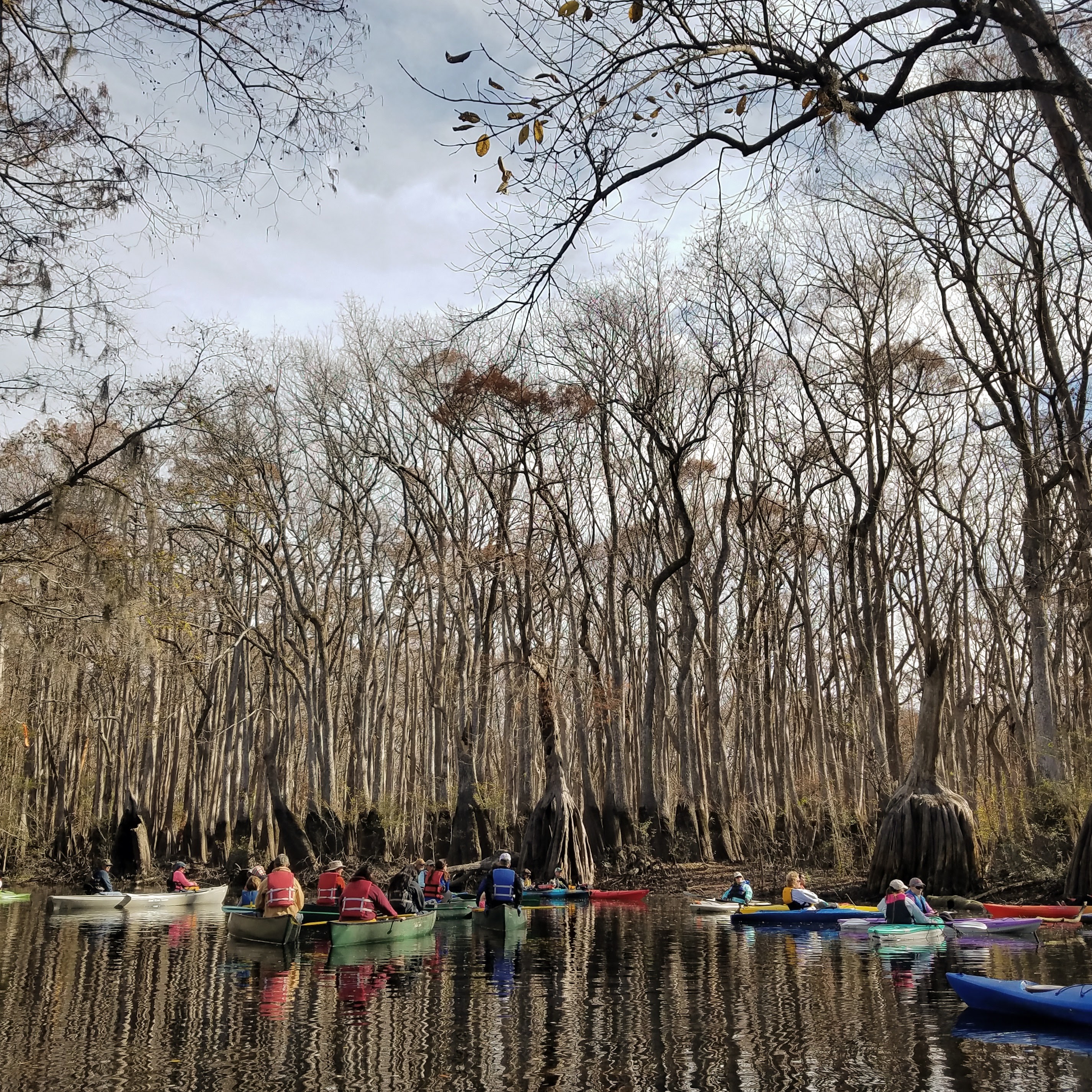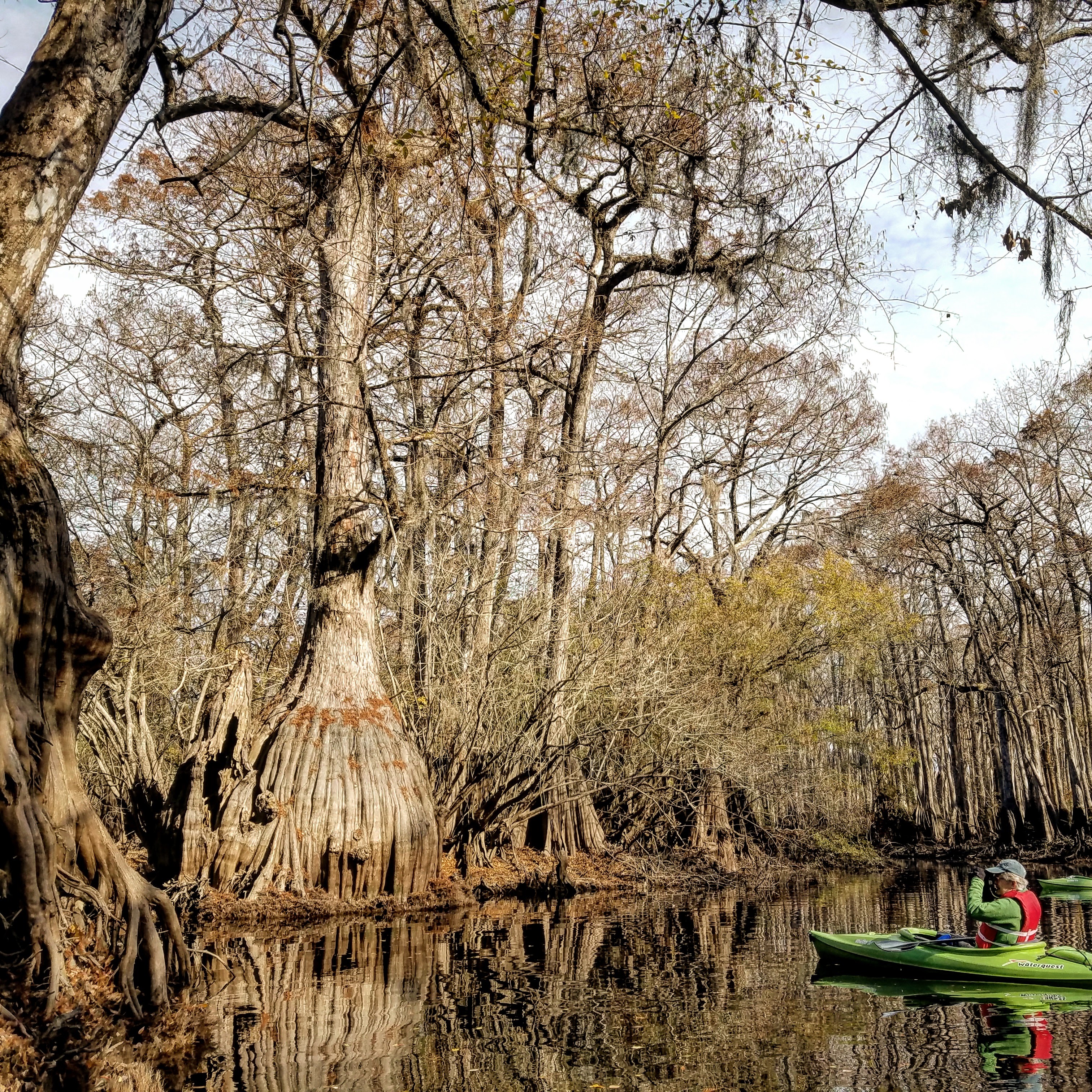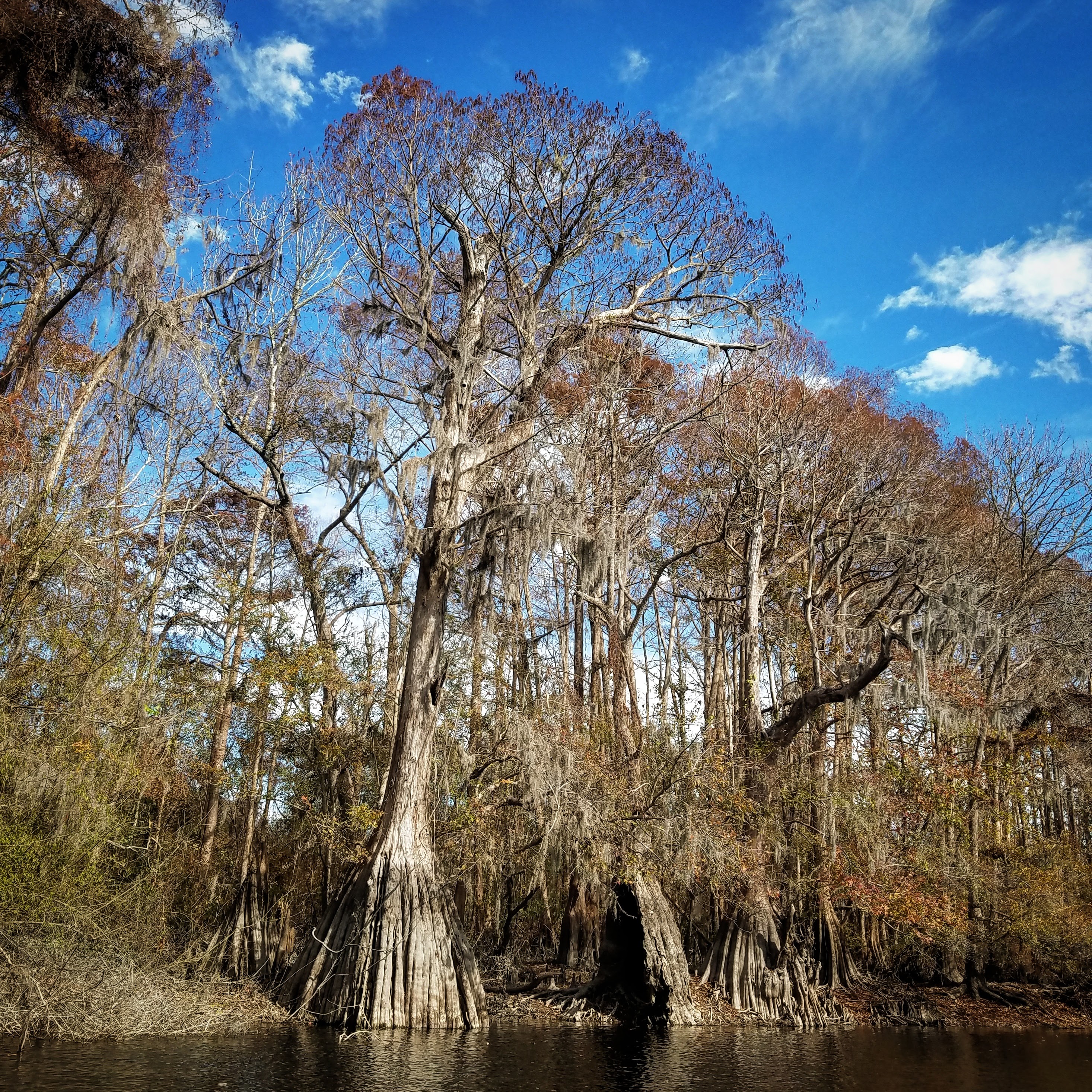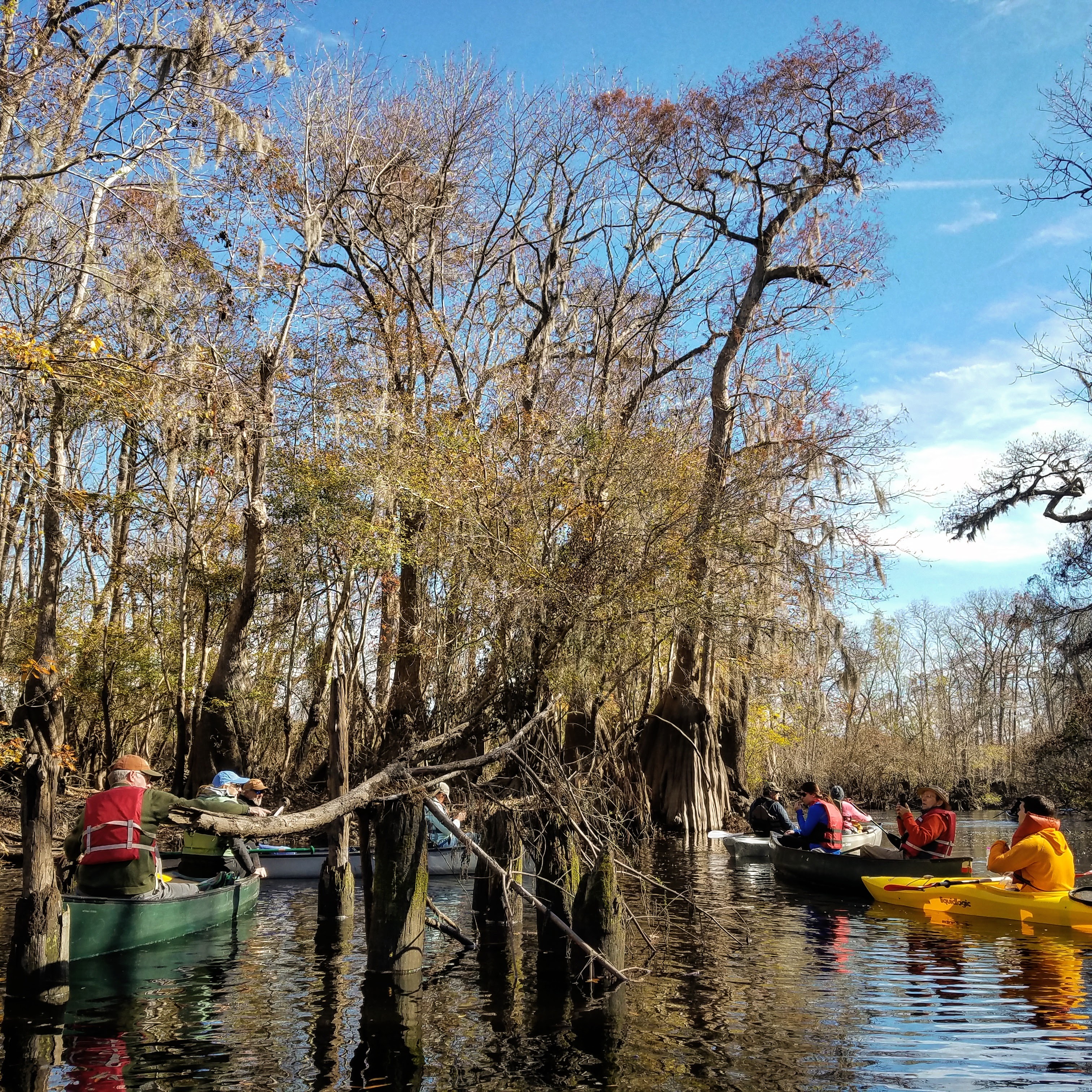As you make your way through the beautiful serenity of the cypress and tupelos of Ebenezer you will inevitably hear tapping.
Some of the taps will be rapid and loud, others will be softer, separated taps. Woodpeckers are just that, they peck wood for grubs and any insect that may be burrowing in a tree. Their skulls and the muscles that attach beaks to skulls absorb the impact of their strikes on trees. When you hear a rapid often loud tapping, an individual woodpecker is letting you and any other creature within earshot, know “This is my territory!” Typically woodpeckers of any size, and we have several in Ebenezer, chose a hollow tree to drum. It’s louder than a solid tree or log. In urban neighborhoods woodpeckers often drum on gutters since they too are hollow and make excellent amplifiers.
The softer more deliberate taps indicate a woodpecker is feeding. As they tap into wood infested with insects and in particular tasty, plump grubs or larvae, they open a particular area and then use their beaks to pry back the wood. So their taps are typically at a much slower frequency.
Specific woodpeckers you are likely to see ranging from the largest to the smallest are Pileated, Red-bellied, Hairy, and Downy. On rare occasion you may glimpse the tiniest, the Red-cockaded. It is the rarest and therefore the most endangered of all our woodpeckers – except of course for the largest, the Ivory-billed, which is considered to be extinct in our area.
The Pileated is the most noticeable since it is the size of an American Crow with a large bright red crest of head feathers that resemble a red fez or pileus and therefore its name, Pileated. White stripes streak its head while its back is solid black. Underneath its wings you see white when it flies overhead. The cartoonist Walter Lantz used the Pileated as his model for Woody Woodpecker of cartoon shows and the Acorn Woodpecker of the west coast for its call. Lantz’s wife voiced the call in his cartoons with her unforgettable Ha, Ha, Ha, Ha, Ha – Ha, Ha, Ha, Ha, Ha – hahahahaha.
Red-bellied Woodpeckers are also noticeable with their prominently black barred backs and bright red caps; they are about the size of a Mockingbird. Their calls are heard clearly as a rapid series of cha, cha, cha, cha. Their name belies the one characteristic you cannot see unless you hold the bird in your hand and ruffle its belly feathers. The underneath of the belly feathers are red. John James Audubon named the bird and indeed held one in his hands to describe it. The Hairy, Downy and Red-cockaded Woodpeckers are much harder to see. Their calls are softer and their small bodies are typically hard to pick out from a moving canoe or kayak. However if you are determined enough you can spot these tinier birds that all resemble the Red-bellied, just as smaller versions. The one characteristic that distinguishes the Hairy and Downy from each other is the length of their beaks.
The Hairy has a longer beak than the Downy. The Red-cockaded’s distinguishing characteristic is red on the nape of the neck and not on the head, as in all other woodpeckers you will see in Ebenezer. Even though woodpeckers are not migratory they are still classified as migratory, nongame birds and are therefore protected under the Federal Migratory Bird Treaty Act. The Red-cockaded and Ivory-billed woodpeckers are on the Endangered Species list, and as such have full protection.
Cathy J. Sakas
The Coastal Naturalist




